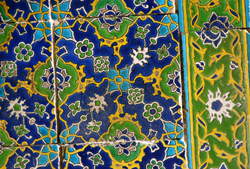Applying science to the decorative arts
Pottery and ceramics have a long history and many exquisite pieces are considered national treasures because of the immense skill applied to make them. Iznik pottery describes the highly decorative ceramics made in the late 16th century and can be seen in imperial buildings in Istanbul. It harks back to a time when Chinese ceramics were admired and emulated in the Islamic world. The Majolica ceramic traditions follow a similar style but were produced in Renaissance Italy. This craft was practiced in Italy for hundreds of years and came to take on the sophistication and artistry on a par with the making of fine jewellery. The CERAMED project turned its attention to the raw materials used in ancient ceramic production and tried to test these through actual experimental reproduction to the benefit of both archaeometry and ethnoarchaeology. The results led to the development of a 'museum quality' label based on technological and archaeological criteria. Overall, the aim was to revitalise the high quality ceramic artefact sector for the museum market. As part of this initiative the scientists reproduced the glazing process in ceramic production. The production of the low-fired decorative ware almost always involved it being glazed with tin oxide. Once the colourant was added to the glaze, it enabled it to cover even terracotta clay. The glaze gave depth to the surface, as well as providing a functional durability. In response to today's health concerns regarding the use of lead in ceramics, scientists developed and evaluated lead-safe and free formulations suitable for glazing. Lead- safe silicates were amongst the alternatives, which were tested for their optical properties and interactions with quartz-based substrates. Furthermore, spectroscopic tools were developed for the evaluation of lead-safe and lead-free formulations.



